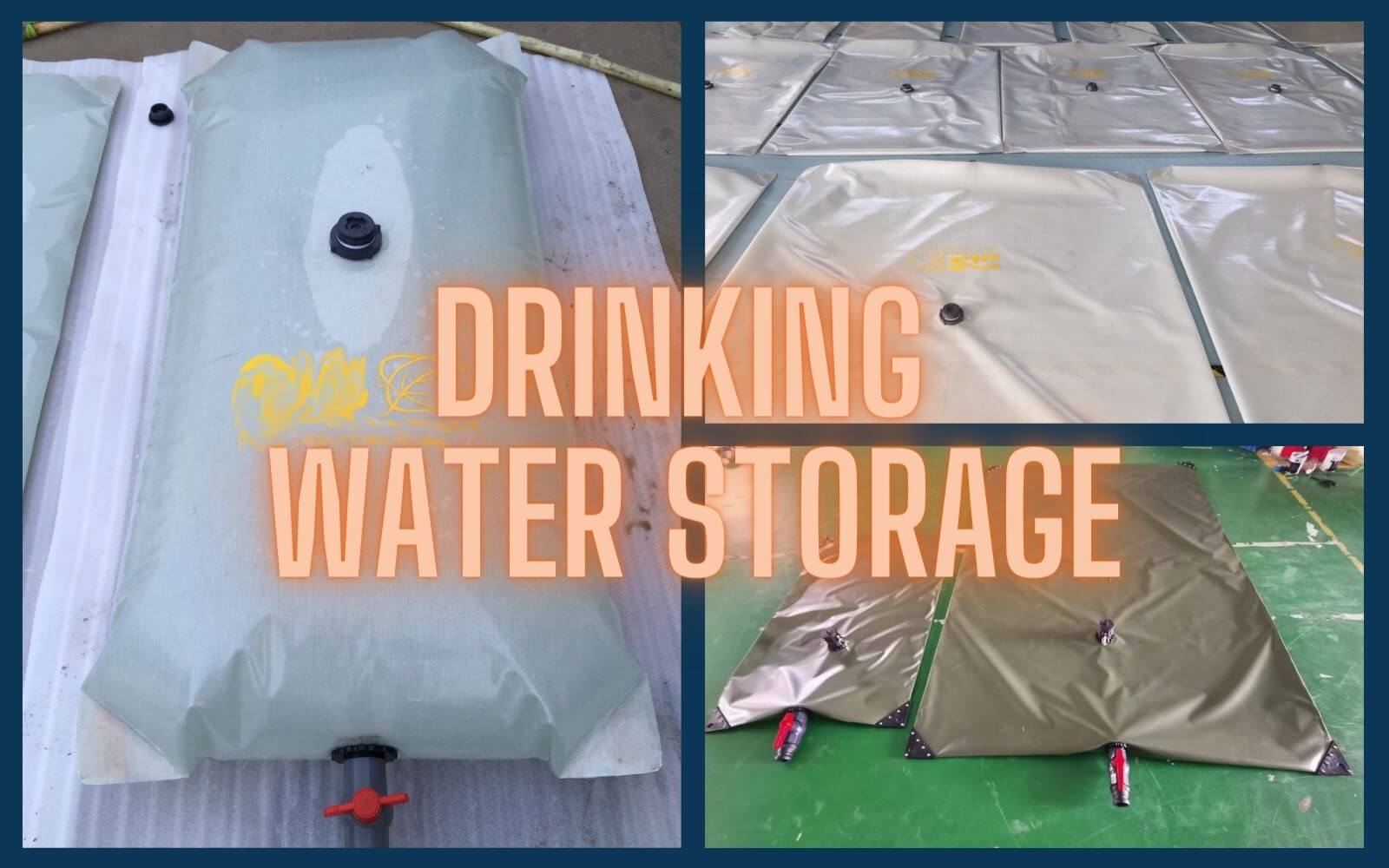DRINKING WATER STORAGE TANK
Drinking water is a necessity, and storing it safely is crucial. With various options available, it can be challenging to determine which the best suited drinking water storage tank. In this comprehensive guide, we will explore the various types of tanks, their advantages, and help you decide which tank is best for your specific drinking water storage needs.
Access to clean and safe drinking water is critical for human health. Whether for residential use, commercial purposes, or emergency preparedness, the quality and safety of stored drinking water must be a top priority.
There are various tank options available for drinking water storage, each with its advantages and disadvantages. Let’s explore some common tank types:
Rigid Drinking Water Storage Tank:
Stainless Steel Tanks
- Advantages: High duration; Resistant to rust and corrosion; Long-term usage.
- Disadvantages: Higher initial cost; Much heavier than plastic tanks; High shipping cost for transfer; Immobility.
Polyethylene Tanks
- Advantages: Lightweight; Cost-effective; Above-ground&Underground usage.
- Disadvantage: Easy UV damage without proper protection; Not easy to transport; High Installation/Maitenance cost.
Concrete Tanks
- Advantages: Excellent durability; Above-gound/Under-ground available; High UV-resistant.
- Disadvantages: High installation/Maintenance cost; Lifespan may be shorter than other tanks; Can’t move.
Fiberglass Tanks
- Advantages: Lightweight; Durable; Resistant to rust and corrosion.
- Disadvantages: Expensive than other options; UV can damage it.
Flexible Tanks:
When considering a flexible tank, compare with the rigid tanks, the flexible one have many advantages, including the lightweight, durability(over 10 years lifespan), UV/rust/corrision-resistant and easy to move and installation.
But the flexible tanks can’t be placed under-ground, as it’s soft. And during usage, we have to avoid to place tanks where may cause punctures.
Soft Plastic Water Tanks
- Advantages: Lightweight; UV-resistant; Cost-effective; Easy to tranport; Easy to install&maintain.
- Disadvantages: Only for wastewater/chemical liquid, can’t use for drinking water, fuel storage; Can’t under-ground usage.
Collapsible Fuel Tanks
- Advantages: Lightweight; UV-resistant; Cost-effective; Easy to tranport; Easy to install&maintain.
- Disadvantages: Only for fuel storage, can’t for water storage; Can’t under-ground usage.
Potable Flexible Water Tanks
- Advantages: Lightweight; UV-resistant; Cost-effective; Easy to tranport; Easy to install&maintain.
- Disadvantages: Only for fuel storage; Can’t under-ground usage.
Custom Tanks from Factory
- Advantages: Lightweight; UV-resistant; Cost-effective; Easy to tranport; Easy to install&maintain.
- Disadvantages: Can’t under-ground usage.
So when can choose the tank based on what we will use for? and the working place.
Choosing the best tank for drinking water should consider several factors:
Water quality and contamination concerns:
For potable water storage, the material of tank must be food-grade.
Tank durability:
The water storage tank, the lifespan ranges from 1-15 years, you can consider the tank base on the requirement.
Cost of the tank:
It depends on the budgets on the plan.
Installation and maintenance condition.
Space availability:
In limited space, the tank should be customized according to the area of working place
When you choose a tank for drinking water storage, please folllow the simple guide below:
The drinking water storage tank, is it food-grade?
You can choose:
- 304/316ss water tanks;
- PE tanks;
- Concrete tanks;
- Fiberglass tanks;
- Potable flexible tanks, only potable tank uses the food-grade materials.
Where do you need to use the drinking water storage tank?
The working site is outdoor, then the tank must be UV-resistant, you can choose:
- 304/316ss water tanks;
- Concrete tanks;
- Potable flexible tanks.
And will you use the tanks near the transmissive area or remote places? if in remote sites, then the tanks should be easy to transport:
- Potable flexible tanks.
How long do you plan to use?
Over 10 years, consider:
- Potable flexible tanks;
- 304/316ss tanks.
5-10 year lifespan:
- Concrete tanks;
- Fiberglass tanks.
1-5 year usage:
- PE tanks.
Do you have enough labors for installation? or transfer at site?
- 304/316ss tanks can connect easily, but it’s heavy, there needs some people at site to transfer and install them.
- PE/Fiberglass tanks can install very fast, just connect them with the filling ports and drainage ports. The only problem is the volume is huge, then the labors are needed too.
- Concrete tanks need the experienced workers to construct and water protection approved.
- Potable flexible tanks, can install very fast, unfold, connection, done. The 10,000L tank, the packing is 0.5m3. So in remote site, the flexible tank is a good choice.
How easy to maintain the drinking water storage tank?
About the maintenance, the concrete tank needs the most care during usage; the PE/fiberglasss needs the UV-protection; the stainless steel and potable flexible tanks only need easy maintenance.
How much is your budget?
Compare of the tanks above, the cost(products cost+shipping cost) from high to low: stainless steel tanks, fiberglass tanks, potable flexible tanks, PE tanks, concrete tanks.
Overall, we’re here to provide a simple guide on how to choose a suitable drinking water storage tank, and when you choose a tank, you should consider about it.
Now we can start to choose it.
Selecting the right tank for drinking water storage is essential to ensure the quality, safety, and availability of clean water. This guide has provided insights into the various tank types and factors to consider, helping you make an informed decision.








